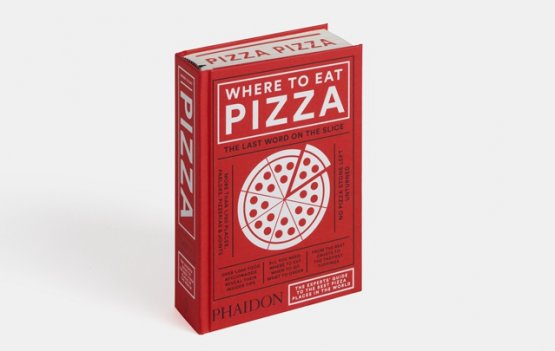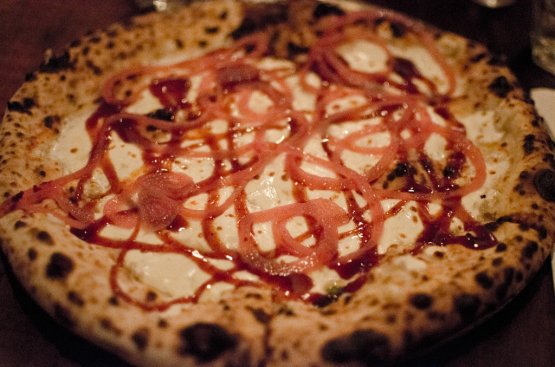In the past few hours much has been said, at least among insiders, about the "Pepe case", that is to say Phaidon’s decision to cancel the big presentation of Where To Eat Pizza, the new global guide to the best pizzerias in the world, edited by Daniel Young, which was to be held at Caserta’s Royal Palace.
While a dutiful premise must remind that we’re still speaking of pizza and there are much more serious issues, the fact the pressure to block a great event that was to celebrate an Italian food par excellence, crowning Franco Pepe at the first place and awarding 10 of our fellow countrymen among the first twenty, including 4 at the very top and 7 in the top 10, came for Italians, and from Naples to be precise. The reason: someone wanted this presentation not to be held in Caserta, but 30 km away.
In yesterday’s article we explained everything in detail, but there was also some misunderstanding: first of all, we need to reaffirm that not all of Naples’ pizza chefs, but only a few representatives – and in fact, it appears, they weren’t even pizza chefs – took this imprudent initiative. For instance, one should note the words of an honest professional such as Francesco Salvo, who came ninth in the list: «We’re ready, we already were, to give the right prestige to this occasion and dutifully celebrate our friend and colleague Franco, he deserves it. I hope we’ll be able to recuperate. We’re here and of course so we’ll be in the future».
Daniel Young, first of all, what is the overall comment emerging from your work?
«You won’t find great pizza everywhere but the guide proves you can find it anywhere. Flagstaff, Arizona (USA). Ako, Hyogo (Japan). All it takes is one obsessive baker, trained or self-taught, who is committed to learning from the best, familiarising himself with the finest raw materials and then it’s practice practice practice. Hipster or geek, these millennial pizzaioli take different approaches. Some are strict disciples of the Neapolitan school, down to the last grain of 00 flour. Others develop an artisanal interpretation of a regional style from the pizza diaspora. And some incorporate a variety of influences from both the pizza world and the bread world to develop their own personal style. Taken together they’re enriched the pizza landscape».
In your book, some excellences stand out even outside of Italy. Is the quality of pizza improving abroad too? Are there some particularly significant trends, for instance I can see a good number of pizzerias from the US at the top…
«The master Neapolitan pizzaiolo Gugliemo Vuolo says that pizza-making boils down to two things: the dough (impasto) and the cooking. The problem with much American pizza is that the dough was almost an afterthought and no better than cardboard, a foam sponge or asbestos. It was all about the layers of crazy toppings smothered with insipid cheese. But with the best craft pizzerias in the USA and around the world the dough is now sacrosanct. The pizzaioli study the science of dough. They test various raw materials, mixes, baking temperatures and techniques. At Apizza Scholls in Portland they limit the number of toppings you can have on your pizza. They feel too many toppings spoils the crust. This kind of thinking is emblematic of a sea change. Toppings may be as crazy or original as ever, especially to a Neapolitan, but quantities are better balanced, more restrained, more under control».

«These pizzaioli have one trait in common: They are all dough guys, dough geeks. They are obsessed with the dough and baking science and the properties of flour and hydration and a dozen other characteristics. I am a sentimentalist and I respect tradition but it’s not enough to say this is perfect because that’s the way my father did it and my grandfather did it. These pizzaioli stand out because they challenge traditions, they test assumptions. They are each innovators in this respect».
A presentation of the book in Italy has not (yet) been possible. It was to take place at Caserta’s Royal Palace but it was cancelled. Why so?
«I don’t know everything that happened behind the scenes. A few key people in the Neapolitan pizza world wanted this presentation to take place in Naples, not Caserta. For them it was a matter of pride. Others were opposed to my releasing a top 20 list. But the campaign against the presentation was instigated by one thoughtful individual with a personal vendetta against Franco Pepe».

The Hometown Brisket from Paulie Gee’s in Brooklyn, New York: it’s perhaps the most bizarre (yet good) pizza Young has had
«The Japanese in particular are loyal disciples of Neapolitan pizza. When visiting Naples they follow their Neapolitan masters, their pizza sensei, into the men’s toilet, so eager are they to observe their every move. This is a fine way to learn and I have great respect for their dedication and accomplishment. Japan is now one of the most important pizza countries in the world. But when your craft is defined by limits - what ingredients, equipment and techniques you can and can’t use – that ultimately restrains creativity. The next big thing in my view is a form of Neo-Neapolitanism, which uses the classic pizza of Naples as a starting point for creativity and innovation. This movement, if you can call it that, is already alive in Naples, too. In my view no pizzaiolo will ever top the classic Margherita. But that’s no reason to stop trying».
What’s the weirdest (yet good) pizza you’ve ever had?
«I don’t have many odd pizzas. The oddest one I’ve had recently is the Hometown Brisket - mozzarella, BBQ beef brisket, pickled red onions and BBQ sauce at Paulie Gee’s In Brooklyn, New York - the 17th best pizza place in the world, according to Where To Eat Pizza».